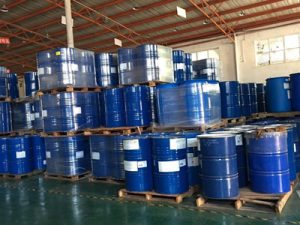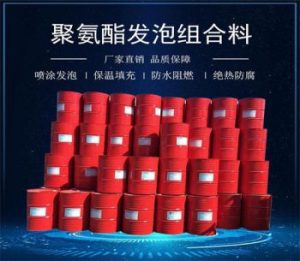Trost-Chen anhydride decarboxylation reaction
Nickel-catalyzed heating decarboxylation of succinic anhydrides to produce olefins.
Nickel-catalyzed Suzuki coupling reaction
Syun Satio et al. found that the zero-valent nickel-catalyzed coupling reaction of chloroaromatics and arylboronic acids can occur in high yields at 80°C. Zero-valent nickel is prepared from the “one-pot” reaction of NiCl2(dppf) (10 mol%) and n-BuLi (40 mol%), and chloroaromatics can be characterized by a variety of electron-absorbing or electron-donating genes. electron-absorbing or electron-donating genes. The low cost of nickel catalyst in this method and the choice of cheap chloroaromatics as reactants make this method valuable for industrial applications. The use of NiCl2(PPh3)2 to catalyze the coupling reaction of alkyl-substituted borates and bromo-substituents has also been investigated, and biologically active compounds have been synthesized in 80% yields at room temperature.

Yamamoto Coupling
Yamamoto coupling, also known as Yamamoto polymerization, is a transition metal reagent (e.g., PdCl2(bipy), NiCl2(bipy), Ni (cod)2, NiBr2(PPh2)2, NiCl2, CoCl2, FeCl2, etc.) that catalyzes the coupling of alkyl-substituted borates and bromo-substituents. CoCl2, FeCl2, etc., of which NiCl2(bipy) and Ni (cod)2 are the most commonly used) promoted coupling polycondensation of dihaloaromatics and polyhaloaromatics through dehalogenation reactions[1] or dehalogenated C-C coupling.

Common nickel-catalyzed reactions
Common catalysts —- Dichlorodi(triphenylphosphine)nickel
Commonly used reagents —-Nickel chloride
Commonly used catalysts —-Ni(COD)2 applications
The reaction of asymmetric cyclization isomerization of alkynes to five-membered heterocyclic compounds catalyzed by phosphine-coordinated rhodium catalysts with high regioselectivity. This reaction enables the convenient intramolecular asymmetric cyclization of olefins and alkynes to efficiently construct a series of five-membered heterocyclic compounds, which have important applications in the synthesis of biologically active molecules as well as drug molecules.In 2000, the first asymmetric cycloheterocyclization isomerization of 1,6-enyne analogs catalyzed by a chiral rhodium catalyst was reported by Ou-Mu Zhang’s group. The catalyst in the reaction system was prepared from a neutral rhodium catalyst [Rh(COD)Cl]2 with a chiral ligand activated by a silver salt.

The reaction of copper alkyne or alkyne esters isomerized into conjugated diene ketones of E, E configuration catalyzed by transition metal catalysts or tertiary phosphines.
The Li Chaojun three-component reaction refers to the direct dehydration condensation of the aldehyde-alkyne-amine triple component to give propargylamine catalyzed by a transition metal, and the reaction is usually carried out in water.1-4
Many catalyst systems such as [Ru]/[Cu],5 [Au],6 [Ag],7 and iron8,9 can be well used for this reaction.
Sugar compounds10-11 can also undergo this reaction directly to produce propargylamine products. For some specific groups of amino acids and peptides under physiological conditions, the three-component reaction can also be carried out12,13 . Primary amines14,15 and aromatic secondary amines16 can be efficiently subjected to the asymmetric three-component reaction. This reaction is also suitable for flow chemistry synthesis17 .
Glycosidization reactions catalyzed by Au(I) complexes (e.g., Ph3PAuOTf, Ph3PAuNTf2) were carried out using glycosyl o-alkynyl benzoates as donors.
Tsuji-Wilkinson decarbonylation reaction
Metal-catalyzed C-H activation (Catalytic C-H activation)
Noyori asymmetric hydrogenation
Cyclopropanation with Metal Carbenoid
Kagan-Horner-Knowle asymmetric hydrogenation reaction
Translated with DeepL.com (free version)

